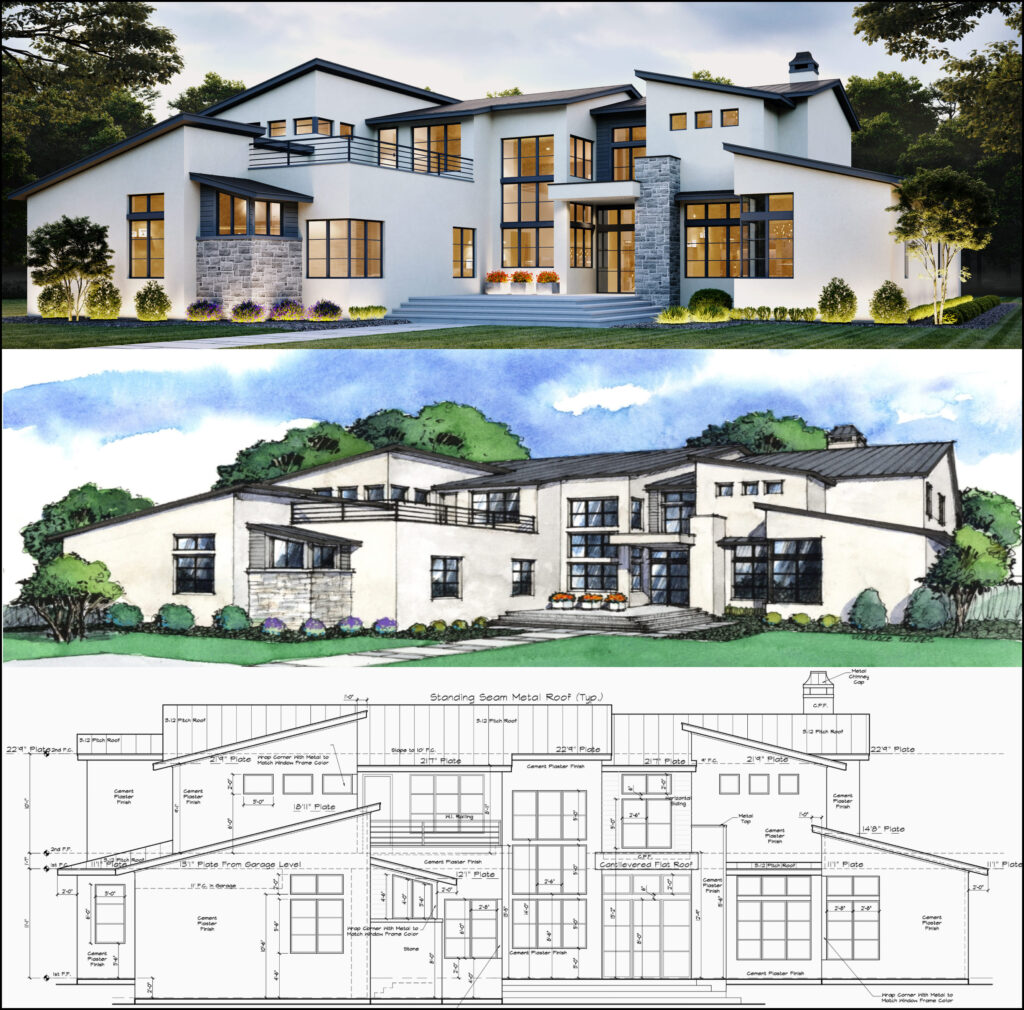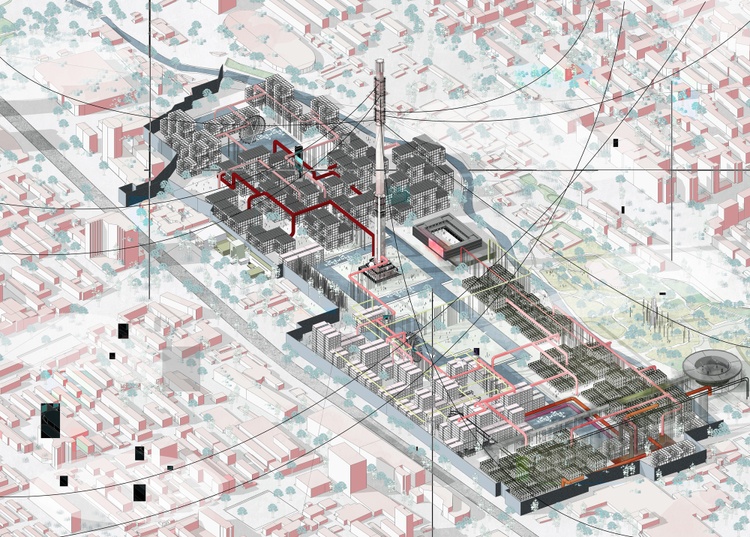Check Out Acclaimed Jobs by Distinguished CDA Architects
Check Out Acclaimed Jobs by Distinguished CDA Architects
Blog Article
A Comprehensive Review of Architectural Styles and Their Influence on Modern City Preparation and Advancement
Building designs have actually long offered as a mirror to the social worths and technical innovations of their time, playing an essential role fit contemporary city planning and development. From the splendour of Neoclassicism to the utilitarian method of Brutalism, each style has introduced unique concepts that influence city aesthetic appeals and performance. As contemporary challenges arise, including sustainability and area demands, comprehending these historical frameworks becomes essential. The resulting discussion not just notifies future design practices yet additionally increases essential concerns about the equilibrium in between heritage and advancement in our developing urban landscapes.
Historical Introduction of Building Designs

As societies transitioned through the Center Ages, Gothic design emerged, characterized by its verticality and intricate describing, matching the spiritual goals of the era. The Renaissance noted a resurgence of classical perfects, combining art and design in innovative means that influenced subsequent designs across Europe.

Today, building styles remain to advance, driven by globalization and sustainability issues, mirroring a vibrant interplay between heritage and technology. This historical introduction highlights the importance of design as a mirror of social evolution and as a driver for city growth.
Key Architectural Styles Explained
The diversity of building designs mirrors the myriad influences that shape our developed atmosphere, each personifying distinctive characteristics and cultural importances. Secret building designs consist of Timeless, Gothic, Baroque, Innovation, and Postmodernism, each representing unique historical contexts and aesthetic viewpoints.
Classic design, rooted in old Greece and Rome, highlights balance, percentage, and the usage of columns (cda architects). In comparison, Gothic style, prospering in the center Ages, is identified by sharp arcs, ribbed safes, and flying buttresses, developing a spiritual top quality in cathedrals. Baroque style, arising in the 17th century, is noted by majesty, elaborate decoration, and a dynamic interaction of light and shadow
Innovation, which got momentum in the very early 20th century, focuses on feature over type, using brand-new materials like steel and glass to create minimal frameworks. Postmodernism, responding against the austerity of Modernism, welcomes eclecticism and historic recommendation, commonly integrating playful elements and paradox.

Influence On Urban Preparation
Fit the growth of cities, architectural designs significantly affect urban planning choices. The choice of building design typically determines the looks, functionality, and general personality of metropolitan settings. Innovation, with its emphasis on minimalism and performance, urges open rooms and the integration of innovation, forming city formats that prioritize effectiveness and availability. Alternatively, conventional styles might stress historic conservation, leading to metropolitan styles that preserve social heritage and advertise pedestrian-friendly settings.
Moreover, building designs can affect zoning guidelines and land utilize plans. Urban planners should take into consideration the dominating building fads when making areas, making certain that brand-new advancements balance with existing structures. This consideration fosters cohesive city landscapes and boosts neighborhood identity.
The implementation of specific building designs can likewise influence socioeconomic factors within a city. High-end modern designs might draw in affluent homeowners and services, leading to gentrification, while much more affordable real estate services could prioritize practical and lasting designs to suit diverse populaces. cda architects. Ultimately, the interaction between building styles and metropolitan planning produces dynamic cities that show both historical context and contemporary demands, shaping the lived experiences of their inhabitants
Sustainability and Modern Design
Building styles play an essential function in addressing modern obstacles, especially in the world of sustainability. As urban locations increase and environmental problems magnify, modern-day architecture progressively welcomes sustainable style concepts that prioritize energy performance, source conservation, and very little eco-friendly impact.
Contemporary architectural activities, such as biophilic design and Continue green design, supporter for frameworks that harmonize with their surroundings, using all-natural materials and promoting biodiversity. These styles usually incorporate renewable resource resources, such as solar panels and wind turbines, to decrease dependence on fossil gas and reduced carbon footprints.
Moreover, the combination of sophisticated modern technologies, such as clever structure systems, enhances power monitoring, maximizing source use while making certain resident comfort. Ingenious water administration approaches, consisting of rain harvesting and greywater recycling, more add to lasting city settings.
Significantly, sustainability prolongs beyond environmental issues; it encompasses social and economic measurements. By cultivating area health and advertising inclusivity, contemporary architectural styles straighten with lasting advancement goals. The evolution of building techniques continues to shape resistant cities that not only meet the demands of the existing but additionally secure the future for generations to come.
Area Interaction in Design
Area interaction in design offers as a critical bridge in between architects and the populaces they serve, ensuring that the developed environment shows the demands and goals of its users. This collective process welcomes community participants to contribute their understandings and preferences, cultivating a sense of possession and responsibility towards the spaces they populate.
Effective area engagement uses various approaches, such as workshops, surveys, and public online forums, to gather diverse viewpoints. These methods promote a two-way dialogue, enabling architects to comprehend neighborhood contexts while empowering citizens to articulate their issues and needs. This inclusivity not just improves the style top quality but likewise advertises social equity by dealing with the special check obstacles faced by marginalized teams.
In addition, community interaction can bring about innovative services that may not arise in a traditional design process. By incorporating regional expertise and cultural worths, engineers can create areas that resonate even more deeply with customers, boosting use and sustainability. Ultimately, prioritizing neighborhood interaction in layout processes results in environments that nurture social interactions, support wellness, and enhance neighborhood connections, consequently why not try this out playing a crucial duty in forming modern urban landscapes.
Conclusion
Architectural styles have profoundly affected modern-day city preparation and growth, mirroring advancing social and technical contexts. The assimilation of historic aesthetic appeals with modern requirements promotes urban environments that prioritize sustainability and community involvement. As cities proceed to expand and adapt, the ongoing dialogue in between building heritage and contemporary style principles will certainly continue to be necessary in developing inclusive, dynamic spaces that enhance lifestyle and advertise social equity. The future of metropolitan development depend upon this unified balance.
Report this page